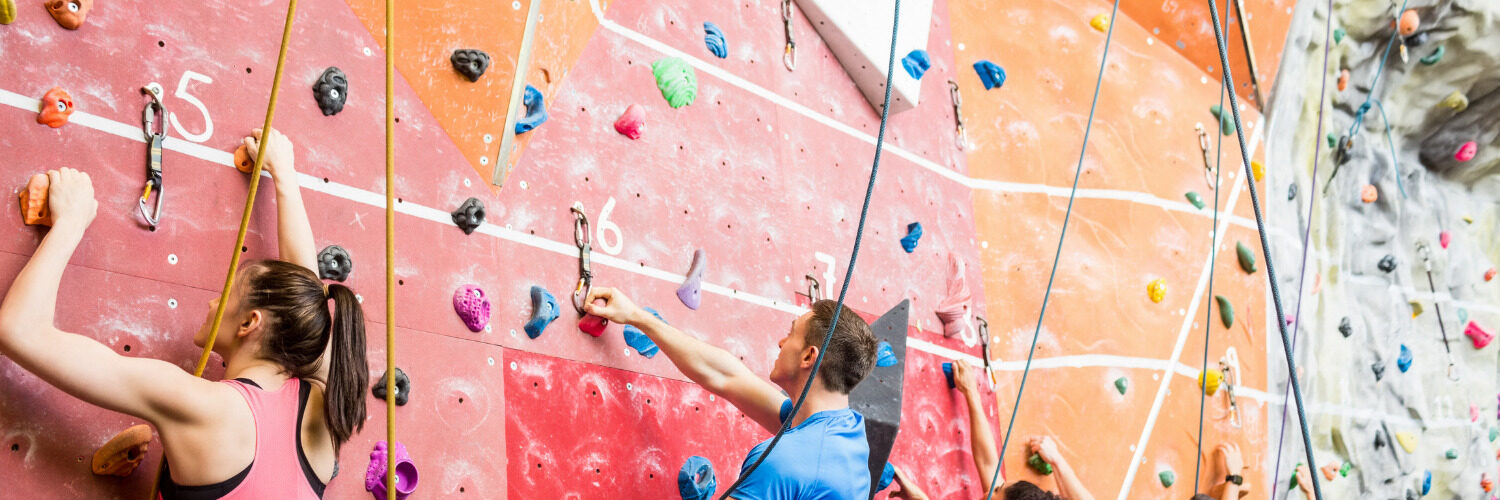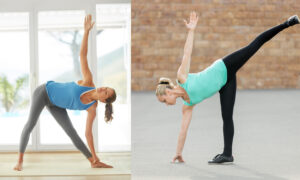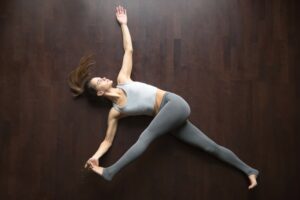

Yoga for Climbing | Adventure Yogi
Yoga and Climbing – the perfect match
Yoga for climbing can be the best combo! To start, many climbers have all told me the same thing – flexibility is key. Over time, strength is built up through the physical practice of climbing itself. However, what is needed is the great mobility of the muscles that are used the mos. This enhances and helps maintain stability on the rock surface whilst making that far reach. The yoga programme I have created here focuses mainly on stretching and lengthening the appropriate muscles used for climbing. Furthermore, encouraging balance, concentration and a calm and steady mind to help overcome mental hurdles.
Of course, wrists, elbows, shoulders and forearms are very important in climbing. However, I’m not going to focus on them. Instead, suggesting that doing plank pose, side plank pose, Chaturanga Dandasana and Kakasana are used for strengthening these parts of the body and focusing the mind. I hope you see that yoga for climbers is a great tool. All climbing levels will strengthen naturally through hours of climbing practice.
Yoga for Climbing – Caring for the forearms
To begin, for all levels I would strongly suggest incorporating massage of the forearms on both the flexor and extensor muscle groups. Maybe, do this as part of your warm-up and down. Kneading of the muscles with the thumb, pressing into the medial and lateral side of the elbow joint. Then, moving into the insertion points of the muscles using a sweeping action from the hand upwards to the elbow. This will help to release the build-up of tension that is produced during intense physical exercise and concentration. Often, when you become unaware of your body positioning during climbing it can result in tensing. Honestly, no one wants tight flexor muscles! Yoga for climbing can be part of your self care!
Yoga for Climbing – Balance is the key to climbing
Asana means comfortable, steady pose. Yoga poses are graceful and elegant yet create strength, flexibility, steadiness and discipline to the body and mind, which are also the benefits of climbing. And yoga for climbing is no different! A climber must be powerful and strong yet fluid, the balance of effort and surrender. BKS Iyengar translates a particular sutra as “perfection in an asana is achieved when the effort to perform becomes effortless.”
Practising or climbing with effort does not mean with tension. Moving forwards, become aware of how you are using your body in every move. Notice, which muscles you are engaging and don’t do it in a tense way, otherwise, you will cause injury to yourself. As you can imagine, balance is essential in climbing. Often, maintaining tiny holds with the feet whilst reaching with the arms for a new hold. Great asanas for the practice of this is Surya namaskar B moving into warrior 2 and 3 as demonstrated in our yoga for climbing photos below. This aids balance, concentration and strength.
Furthermore, footwork is key in the tiny holes on the rock surface. So, when practising your yoga for climbing postures, try focusing on your feet for correct alignment. Soon, you will notice how important foot placement is in your practice in order to achieve the correct posture. Moving forwards, this observation will help prevent injury by informing the body of the correct alignment. Also, correct footwork produces stability yet lightness in the hold which will aid skill and grace.
The importance of the legs
Strong yet flexible legs play an important role in climbing. Pushing the body up in the climb and allowing more reach in the arms, flexibility in the legs covers more surface area. To begin, leg muscle groups are the primary focus of stretching and lengthening. Gluteal muscles, quadriceps, hamstrings, adductors and psoas muscles all need to be worked on. Furthermore, gastrocnemius and soleus create ankle and foot flexibility. Yoga for climbing really needs to be a full-body experience!
Yoga for Climbing – Mind over matter
Often, limitations in climbing are mind related. Fear of falling is the biggest psychological fear for climbers. Truly, yogis feel it too when attempting postures such as headstand, a great asana for overcoming fear. In order to help your mind stay focused and calm when leading routes, you need to be aware of how your mind works. Practising mindfulness meditation every day you learn to understand yourself better. Your emotions, perceptions, desires, thoughts and intentions. Often, climbing brings out the adventurous side of a person! Not knowing what’s happening next yet not worrying, trusting that everything will work out, will flow.
Climbing, like meditation and yoga, teaches us to be present at this very moment.
Progressing, this awareness of thought patterns creates calmness of mind, allowing us space to learn not to react to our thoughts and let them go with non-attachment. In time, the mind becomes more focused and relaxed, able to surpass new challenges. Furthermore, you will learn more about yourself as a person! For instance, how you cope with things, negotiate situations, be present with who you are and learning to trust yourself. The moment the mind begins controlling you, the fear sets in. For meditation techniques see a professional practitioner in your area.
Yoga for Climbing
This following sequence of yoga postures for climbing is good for a warm-up or cool-down practice that can last between 30 minutes to 1 hour. Start or end with 10 – 20 minutes meditation.
1. Begin with Suryanamaskar (sun salutations) to warm up the body, leading to Virabhadrasana (warrior) 2 and 3. 2 rounds of Suryanamaskar A and 4 of series B with 2 of warrior 2 and 3.
Benefits: Strengthens the legs, groin, chest, lungs and shoulders. They increase stamina, balance and concentration. Warrior 3 strengthens the ankles and legs, improves balance, concentration and tones the abdomen.
2. Trikonasana (Triangle pose) moving into Ardha Chandrasana (half moon pose)
Benefits: Strengthens and stretches the groins, hamstrings, hips, the deep low back stabilising muscle Quadratus Lumborum, Latissimus Dorsi and Teres minor (climbing muscles). Movement between the 2 poses increases balance and concentration.
3. Gomukhasana (Cow face pose)
Benefits: This is an amazing yoga posture for climbers. Opens up the shoulders; pectoralis major and minor, rotator cuff muscles, biceps and triceps. This posture also opens the gluteus muscles, piriformis and TFL in the lower body. To get most out of this, use a strap behind you so you are not overreaching and putting too much stress into your shoulders. It is recommended to stay here for up to one minute but never stay longer than you are comfortable for.
4. Yoga for Climbing – Supta Padangusthasna (reclining big toe pose)
This Yoga for climbers posture is a great restorative hamstrings stretch. Lying down, press the lower back into the floor engaging the mulha bandha. Lifting up the left leg, put a strap around the foot and keep the foot flexed. Keep the leg as straight as possible and bring it towards your chest. For a stretch to the inner thigh (adductor muscles) lower your left leg gently to the left side and hold for 5 breaths. For a stretch on the glutes, hold the strap with your right hand and bring the left leg to your right side. This is also a good twist in the lower back. Repeat on the other leg. For more of a stretch to the adductors roll into the splits (Hanumanasana) only if you are an experienced yogi/ini.
Benefits: Stretches and strengthens the hamstrings, quadriceps, adductors and stretches the calves and IT band.
5. Yoga for Climbing – Uttkatasana (Chair Pose)
This yoga for climbers pose creates a sense of strength, stability and confidence. Building strength in the legs, glutes core as well as the ankles and feet, this posture is perfect for feeling ready to climb. You can use your breath to come in and out of this posture or, create some resilience by holding here for three of five deep breaths. Remember to use your core and not sink into your lumbar spine.
Benefits: Calf and ankle openers, strengthens the back, thighs, shoulders and opens the shoulders.
6. Yoga for Climbing – Vipassana – Mindfulness meditation
Don’t be fooled into thinking this is not an effective yoga practise for climbing. Remember, so much of overcoming obstacles on a climb is the challenge in your mind! Connecting your body, mind and breath as one being and entity creates a feeling of being present in the moment, perfect for climbing! To start, meditate for 5 minutes and leading onto 30 minutes a day. If you struggle by yourself, try using an app such as HeadSpace for great guided meditations.
We hope that these postures help you both on the climbing wall and mat as well as in daily life!






